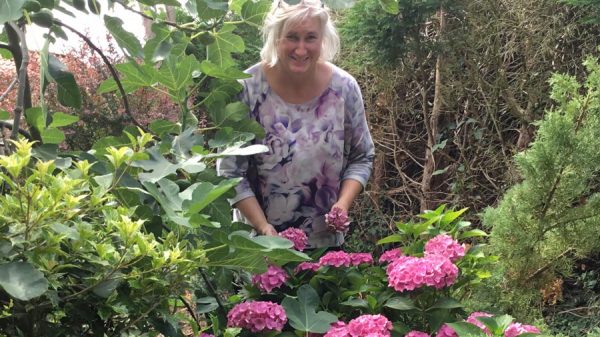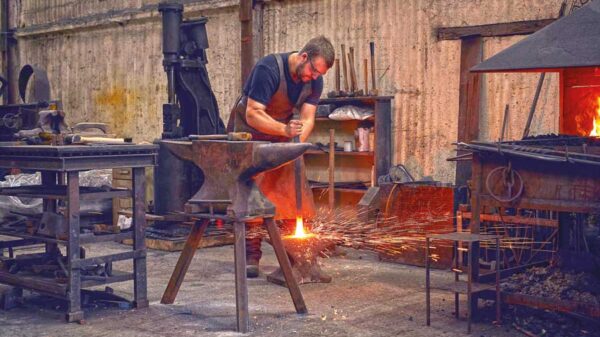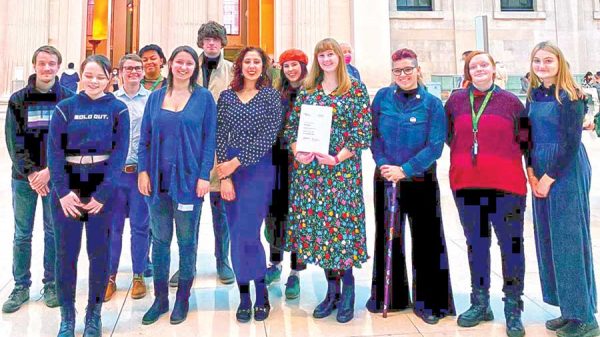With the UK hosting the 26th UN Climate Change Conference of the Parties (COP26) in Glasgow in November, (1 – 12 November 2021), the RHS is bringing the RHS COP26 Garden to the 2021 RHS Chelsea Flower Show (21 – 26 September).
Taking a key message from COP26, the RHS COP26 Garden, which has been designed by Balston Agius, led by Marie-Louise Agius, will demonstrate how our gardens, plants and public green spaces can play an integral part in protecting biodiversity, our planet and people and ensure a greener, more resilient future for us all.
The RHS wants the RHS COP26 Garden to be a real game changer to get government, press and people everywhere to really understand and appreciate how everyone growing more plants responsibly and creating nature based solutions in their outside spaces, can help protect the planet, the people who live on it and the biodiversity vital for our survival.
Whilst it will be a clear exposition of the climate change crisis, the Garden will also show achievable things that people can do at home and within their communities that don’t cost too much. Plants sustaining pollinators and insects can be grown from seed. So can climbers like beans providing summer food and a small degree of cooling. This will be a call for action by the RHS, for people to make small changes to their own garden, which collectively will make a big difference.
The RHS COP26 Garden will comprise of four key themes split within the Garden; Decline, Adaptation, Mitigation and Balance.
The DECLINE quarter of the Garden will demonstrate key issues around climate change, like poorly managed planning and construction and excessive drainage leading to flooding. It will show negative gardening practices such as the monoculture of the lawn, made worse by over-irrigation and the use of too many chemicals. It culminates with the sterility of the paved-over front garden fit only for a parked car and of little use to needy insects.
The ADAPTATION quarter of the RHS COP26 Garden shows how we need to become more environmentally aware and adjust our landscaping and planting to respond to climate change. For instance using highly drought tolerant desert plants, which can also put up with occasional deluges, or creating meadows, or the equivalent of a Garrigue, to accommodate the extremes of drought and downpour. Adjusting ground levels can also promote faster drainage.
The MITIGATION quarter demonstrates landscaping and planting ideas both at a community level and a more personal garden level to activitely support and help the environment in our outside spaces. It starts with the fundamentals of soil, with worms and compost, and control of surface water run-off by means of a swale. At the centre is a wildlife pond, dramatically extending the wildlife habitat. The meadow alongside, which is a haven for pollinators and insects, leads into a green front garden, packed with insect friendly plants. The RHS hopes people will be inspired to take some of these ideas home.
Finally, the BALANCE area of the Garden shows how we can work with nature, even when temperatures have risen and storms are more severe, to create a beautiful environmentally friendly garden, brimful of fruit and veg and ornamentals. This modern cottage garden area is a green outside space with a diverse range of plants reflecting growing conditions.
For visitors to view the exhibit closely, a sinuous path surfaced with recycled scaffold boards leads through, pausing at the UNIVERSAL WINDOW BOX. The intention is to demonstrate a mini-mitigation with a variety of climbers, annuals and small shrubs, which anyone could plant in their garden or window box, however small, to provide both a degree of mitigation and the achievement of growing things.
Alistair Griffiths, RHS Director of Science, says: “The RHS is passionate about the significant improvements our gardens can make to reverse the biodiversity climate crisis and we are conducting scientific research to find and share the best solutions to help adapt to, and mitigate against, climate change by looking after our habitat, the planet.
“The RHS COP26 Garden is an incredible display showing how we can both harm our planet through gardens but also, more importantly, how, through our outside spaces we can, through nature based solutions, proactively do good to help biodiversity, the environment and protect the planet, something that is absolutely vital in this climate crisis and our survival. Never has it been so important to shine a light on these critical issues.”
Marie-Louise Agius, of Balston Agius, said: “We are honoured that the RHS has asked us to design the RHS COP26 Garden. Climate change is something we face on a daily basis and it cannot be ignored. Moreover we need to be proactive about addressing the issues and we hope to show the role horticulture and a sustainable approach to the design of our external spaces can have in doing this. This is not an issue for ‘others’ to deal with, we each have an individual responsibility and opportunity to contribute towards improving climate change.”







